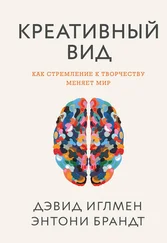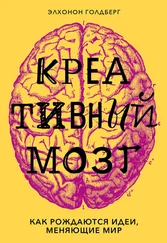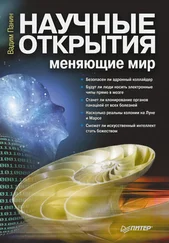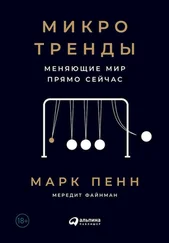51. E. Goldberg, K. Podell, R. Harner, M. Lovell, and S. Riggio, «Cognitive Bias, Functional Cortical Geometry, and the Frontal Lobes: Laterality, Sex, and Handedness», Journal of Cognitive Neuroscience 6 (1994): 274–294.
52. S. Varanese, B. Perfetti, S. Mason, A. Di Rocco, and E. Goldberg, «Lateralized Profiles of Frontal Lobe Dysfunction in Parkinson’s Disease», Presented at the Seventh International Congress on Mental Dysfunctions and Other Non-Motor Features in Parkinson’s Disease and Related Disorders (Barcelona, Spain: 2010).
53. R. A. Goldstein, N. D. Volkow, «Drug Addiction and Its Underlying Neurobiological Basis: Neuroimaging Evidence for the Involvement of the Frontal Cortex», American Journal of Psychiatry 159 (2002): 1642–1652; A. Verdejo-Garcia, R. Vilar-Lopez, M. Perez-Garcia, and E. Goldberg, «Altered Adaptive but Not Veridical Decision-Making in Substance Dependent Individuals», Journal of the International Neuropsychological Society 12 (2006): 90–99.
54. A. Verdejo-Garcia, L. Clark, J. Verdejo-Roma, N. Albein-Urios, J. M. Martinez-Gonzalez, B. Gutierrez, and C. Soriano-Mas, «Neural Substrates of Cognitive Flexibility in Cocaine and Gambling Addictions», The British Journal of Psychiatry (2015) 207: 158–164; O. Contreras-Rodríguez, N. Albein-Urios, J. C. Perales, J. M. Martínez-Gonzalez, R. Vilar-López, M. J. Fernández-Serrano, O. Lozano-Rojas, and A. Verdejo-García, «Cocaine-Specific Neuroplasticity in the Ventral Striatum Network Is Linked to Delay Discounting and Drug Relapse», Addiction 10 (2015): 1953–1962.
Глава 6. Мозг-новатор
1. Более подробный обзор биологических различий двух полушарий у разных видов см.: E. Goldberg, The New Executive Brain: Frontal Lobes in a Complex World (New York: Oxford University Press, 2009); and E. Goldberg, The Wisdom Paradox: How Your Mind Can Grow Stronger as Your Brain Grows Older (New York: Gotham Books, 2005).
2. E. Goldberg and L. Costa, «Hemisphere Differences in the Acquisition and Use of Descriptive Systems», Brain and Language 14 (1981): 144–173.
3. T. G. Bever and R. J. Chiarello, «Cerebral Dominance in Musicians and Nonmusicians», Science 185 (1974): 537–539.
4. C. A. Marci and G. Berlucchi, «Right Visual Field Superiority for Accuracy of Recognition of Famous Faces in Normals», Neuropsychologia 15 (1977): 751–756.
5. A. Martin, «Automatic Activation of the Medial Temporal Lobe During Encoding: Lateralized Influences of Meaning and Novelty», Hippocampus 9 (1999): 62–70.
6. M. Lezak, D. B. Howieson, E. D. Bigler, and D. Tranel, Neuropsychological Assessment, 5th edn. (New York: Oxford University Press, 2012).
7. M. Corbetta and G. L. Shulman, «Control of Goal-Directed and Stimulus-Driven Attention in the Brain», Nature Reviews Neuroscience 3 (2002): 201–215; M. Corbetta, G. Patel, and G. L. Shulman, «The Reorienting System of the Human Brain: From Environment to Theory of Mind», Neuron 58 (2008): 306–324; B. J. Levy and A. D. Wagner, «Cognitive Control and Right Ventrolateral Prefrontal Cortex: Reflexive Reorienting, Motor Inhibition, and Action Updating», Annals of the New York Academy of Sciences 1224 (2011): 40–62; D. Badre and A. D. Wagner, «Left Ventrolateral Prefrontal Cortex and the Cognitive Control of Memory», Neuropsychologia 45 (2007): 2883–2901.
8. D. Wang, R. L. Buckner, and X. H. Liu, «Functional Specialization in the Human Brain Estimated by Intrinsic Hemispheric Interaction», The Journal of Neuroscience 34 (2014): 12341—12352.
9. D. Sridharan, D. J. Levitin, and V. Menon, «A Critical Role for the Right Frontoinsular Cortex in Switching Between Central-Executive and Default-Mode Networks», Proceedings of the National Academy of Sciences 105 (2008): 12569—12574; D. Sridharan, D. J. Levitin, C. H. Chafe, J. Berger, and V. Menon, «Neural Dynamics of Event Segmentation in Music: Converging Evidence for Dissociable Ventral and Dorsal Networks», Neuron 55 (2007): 521–532.
10. T. T. Chong, R. Cunnington, M. A. Williams, and J. B. Mattingley, «The Role of Selective Attention in Matching Observed and Executed Actions», Neuropsychologia 47 (2009): 786–795; T. T. Chong, R. Cunnington, M. A. Williams, N. Kanwisher, and J. B. Mattingley, «fMRI Adaptation Reveals Mirror Neurons in Human Inferior Parietal Cortex», Current Biology 18 (2008): 1576–1580.
11. H. P. Op de Beeck, C. I. Baker, J. J. DiCarlo, and N. G. Kanwisher, «Discrimination Training Alters Object Representations in Human Extrastriate Cortex», The Journal of Neuroscience 26 (2006): 13025—13036.
12. M. Delazer, F. Domahs, L. Bartha, C. Brenneis, A. Lochy, T. Trieb, and T. Benke, «Learning Complex Arithmetic— An FMRI Study», Brain Research: Cognitive Brain Research 18 (2003): 76–88.
13. D. Sridharan, D. J. Levitin, and V. Menon», A Critical Role for the Right Fronto-insular Cortex in Switching Between Central-Executive and Default-Mode Networks», Proceedings of the National Academy of Sciences 105 (2008): 12569—12574.
14. S. J. Sara, C. Dyon-Laurent, and A. Hervé, «Novelty Seeking Behavior in the Rat Is Dependent upon the Integrity of the Noradrenergic System», Brain Research: Cognitive Brain Research 2 (1995): 181–187.
15. C. Lee, J. W. Yang, S. H. Lee, S. H. Kim, S. H. Joe, I. K. Jung, I. G. Choi, and B. J. Ham, «An Interaction Between the Norepinephrine Transporter and Monoamine Oxidase A Polymorphisms, and Novelty-seeking Personality Traits in Korean Females», Progress in Neuro-Psychopharmacology and Biological Psychiatry 32 (2008): 238–242.
16. R. R. I. Kruglikov, N. V. Orlova, and V. M. Getsova, «Content of Norepinephrine and Serotonin in Symmetrical Divisions of the Brain of Rats in the Norm During Learning and with the Administration of Peptides», Neuroscience and Behavioral Physiology 22 (1992): 128–131; S. D. Glick, D. A. Ross, and L. B. Hough, «Lateral Asymmetry of Neurotransmitters in Human Brain», Brain Research 234 (1982): 53–63; R. Carter, Mapping the Mind (London, UK: Phoenix Publishing, 2004); S. D. Glick, Cerebral Lateralization in Non-Human Species (Cambridge, MA: Academic Press, 1985); S. D. Glick, R. C. Meibach, R. D. Cox, and S. Maayani, «Multiple and Interrelated Functional Asymmetries in Rat Brain», Life Sciences 25 (1979): 395–400.
17. S. Grossberg, Neural Networks and Natural Intelligence (Cambridge, MA: MIT Press, 1988); R. C. O’Reilly and Y. Munakata, Computational Explorations in Cognitive Neuroscience (Cambridge, MA: MIT Press, 2000).
18. Y. Hakeem, C. C. Sherwood, C. J. Bonar, C. Butti, P. R. Hof and J. M. Allman, «Von Economo Neurons in the Elephant Brain», The Anatomical Record 292 (2009): 242–248.
19. J. M. Allman, N. A. Tetreault, A. Y. Hakeem, K. F. Manaye, K. Semendeferi, J. M. Erwin, S. Park, V. Goubert, and P. R. Hof, «The Von Economo Neurons in the Frontoinsular and Anterior Cingulate Cortex», Annals of the New York Academy of Sciences 1225 (2011): 59–71.
20. P. Rourke, Nonverbal Learning Disabilities: The Syndrome and the Model, 1st edn. (New York: The Guilford Press, 1989).
21. A. Kluger and E. Goldberg, «Comparison of VIQ/ PIQ Ratios in Patients with Affective Disorders, Diffuse and Right Hemisphere Brain Disease», Journal of Clinical and Experimental Neuropsychology 12 (1990): 182–194.
22. C. Chiron, I. Jambaque, R. Nabbout, R. Lounes, A. Syrota and O. Dulac, «The Right Brain Hemisphere Is Dominant in Human Infants», Brain 120 (1997): 1057–1065.
23. E. Goldberg, The Wisdom Paradox: How Your Mind Can Grow Stronger as Your Brain Grows Older (New York: Gotham Books, 2005).
24. V. Llaurens, M. Raymond, and C. Faurie, «Why Are Some People Left-handed? An Evolutionary Perspective», Philosophical Transactions of the Royal Society of London, B: Biological Sciences 364 (2009): 881–894.
Читать дальше
![Элхонон Голдберг Креативный мозг [Как рождаются идеи, меняющие мир] [litres] обложка книги](/books/395572/elhonon-goldberg-kreativnyj-mozg-kak-rozhdayutsya-id-cover.webp)




![Наталья Царенко - Джентльменами не рождаются, или Секреты воспитания мальчиков [litres]](/books/396504/natalya-carenko-dzhentlmenami-ne-rozhdayutsya-ili-se-thumb.webp)






